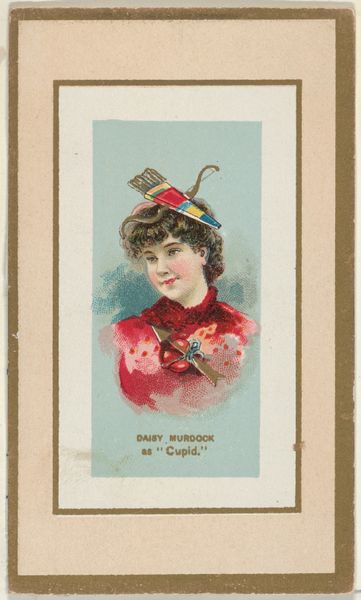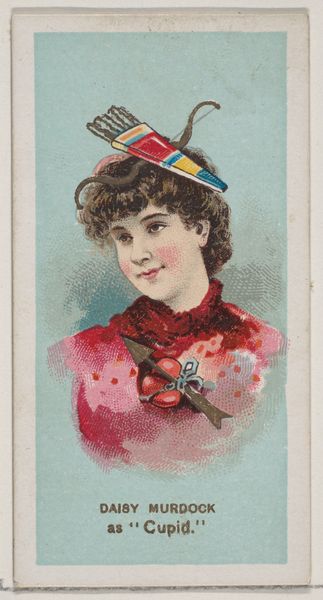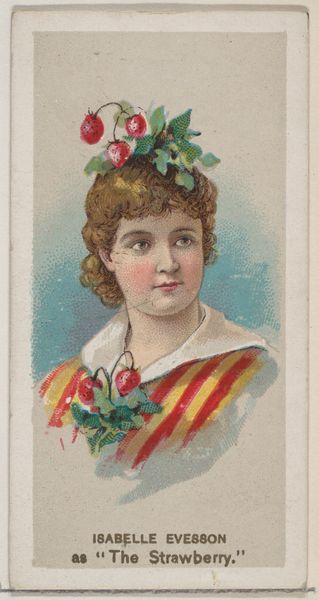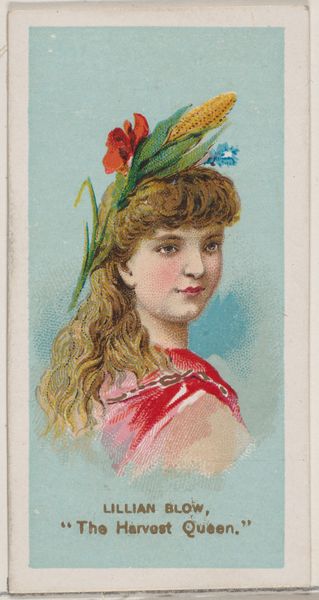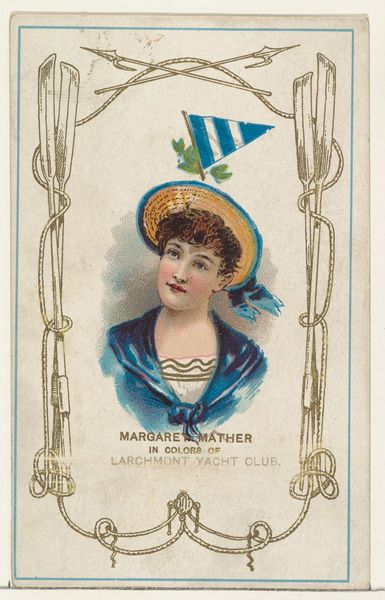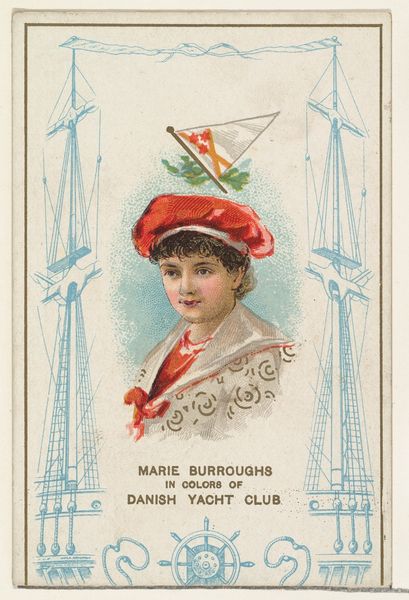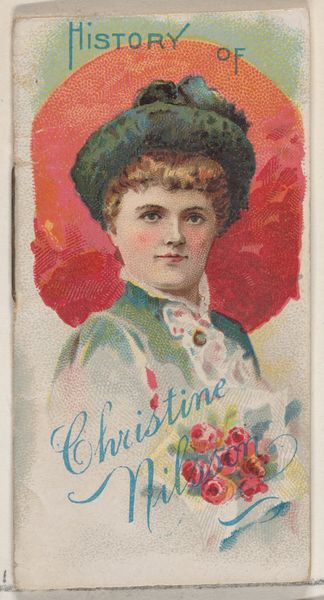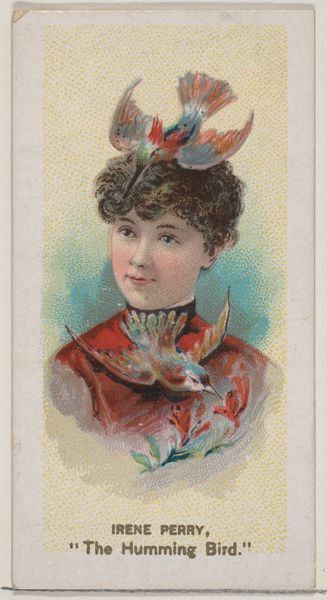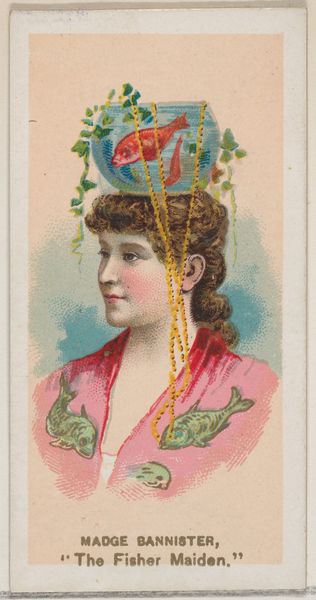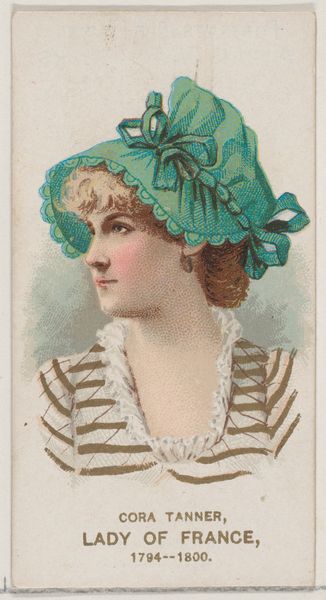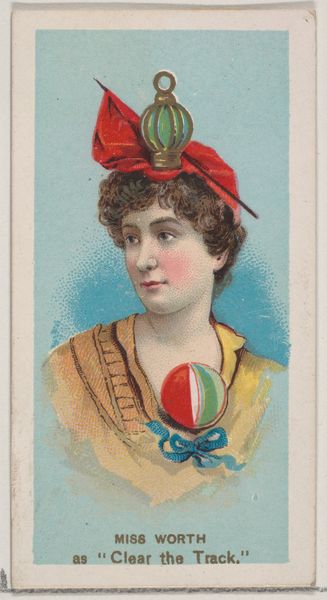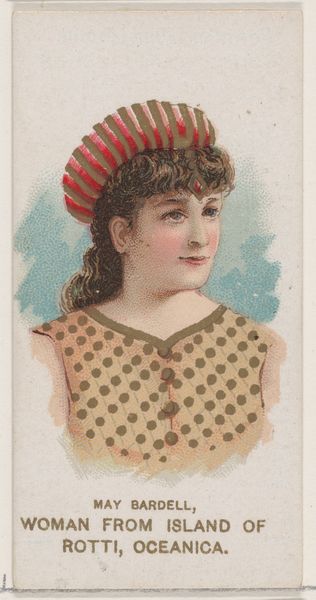
Genevieve Lytton in Colors of St. Augustine Yacht Club, from the Yacht Colors of the World series (N140) issued by Duke Sons & Co. to promote Honest Long Cut Tobacco 1890
0:00
0:00
Dimensions: Sheet: 4 in. × 2 1/2 in. (10.1 × 6.3 cm)
Copyright: Public Domain
Editor: Here we have "Genevieve Lytton in Colors of St. Augustine Yacht Club," a print made around 1890 by W. Duke, Sons & Co. as a promotional item. The color palette is very limited. It feels almost like a uniform, or perhaps a symbol of belonging. What do you make of its representation of gender and class? Curator: It's fascinating to consider this image as a product of its time, steeped in the politics of identity. These 'trade cards' often reflected and reinforced prevailing social hierarchies. What does it mean to see a woman, Genevieve Lytton, presented in the 'colors' of a yacht club? Is she a member? More likely, she’s an ornament, embodying the aspirations of the club’s male members, don't you think? Editor: I do. So the imagery of sailing and exclusivity is really being leveraged to sell tobacco? Curator: Exactly. The 'colors' aren't just aesthetic; they signify belonging, privilege, and power. Think about how the burgeoning advertising industry used idealized images of women to promote consumption and reinforce gender roles. Editor: It’s striking how a seemingly innocent portrait can reveal so much about the socio-political landscape of the era. This puts it in such a broader cultural narrative. Curator: Indeed. Consider also the absence of women’s voices and agency in these representations. It’s vital to question whose perspectives are being privileged and whose are being marginalized, right? Editor: Right! Thank you; that helps to clarify so much. Curator: Absolutely. Looking closely reveals how art becomes an active agent in perpetuating or challenging power structures.
Comments
No comments
Be the first to comment and join the conversation on the ultimate creative platform.
